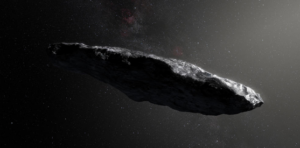Avi Loeb of Harvard University—known as the “bad boy of astronomy”—is at it again. The theoretical physicist made headlines last month for his controversial expedition off the coast of Papua New Guinea, where his team combed the ocean floor for remnants of two meteors Loeb believes could actually contain alien technology. They did recover metallic “spherules” from the site, but it’s still unclear what they are exactly. Are they remnants of an impact? Are they something naturally occurring, or not?
From where Loeb stands, there’s at least a chance these spherules are alien probes, dropped from a mothership; he believes the cigar-shaped Oumuamua, which in 2017 became the first known interstellar object to visit our solar system, could be such a parent craft, for instance. But how would aliens pull this kind of operation off, and why would they want to in the first place?
Sadistic Vlad the Impaler cried real tears of blood
A recent paper from Loeb and Sean Kirkpatrick, director of the Pentagon’s newly created All-domain Anomaly Resolution Office, could shed light on those motivations—or lead the public to draw the wrong conclusions. People may find it threatening (or even humorous) that researchers like Loeb put forward ideas that rely on longer odds or explanations from the edges, but many of his suggestions about alien technology are grounded in serious scientific methodology.
Continue here: Popular Mechanics
Ask me anything
Explore related questions





